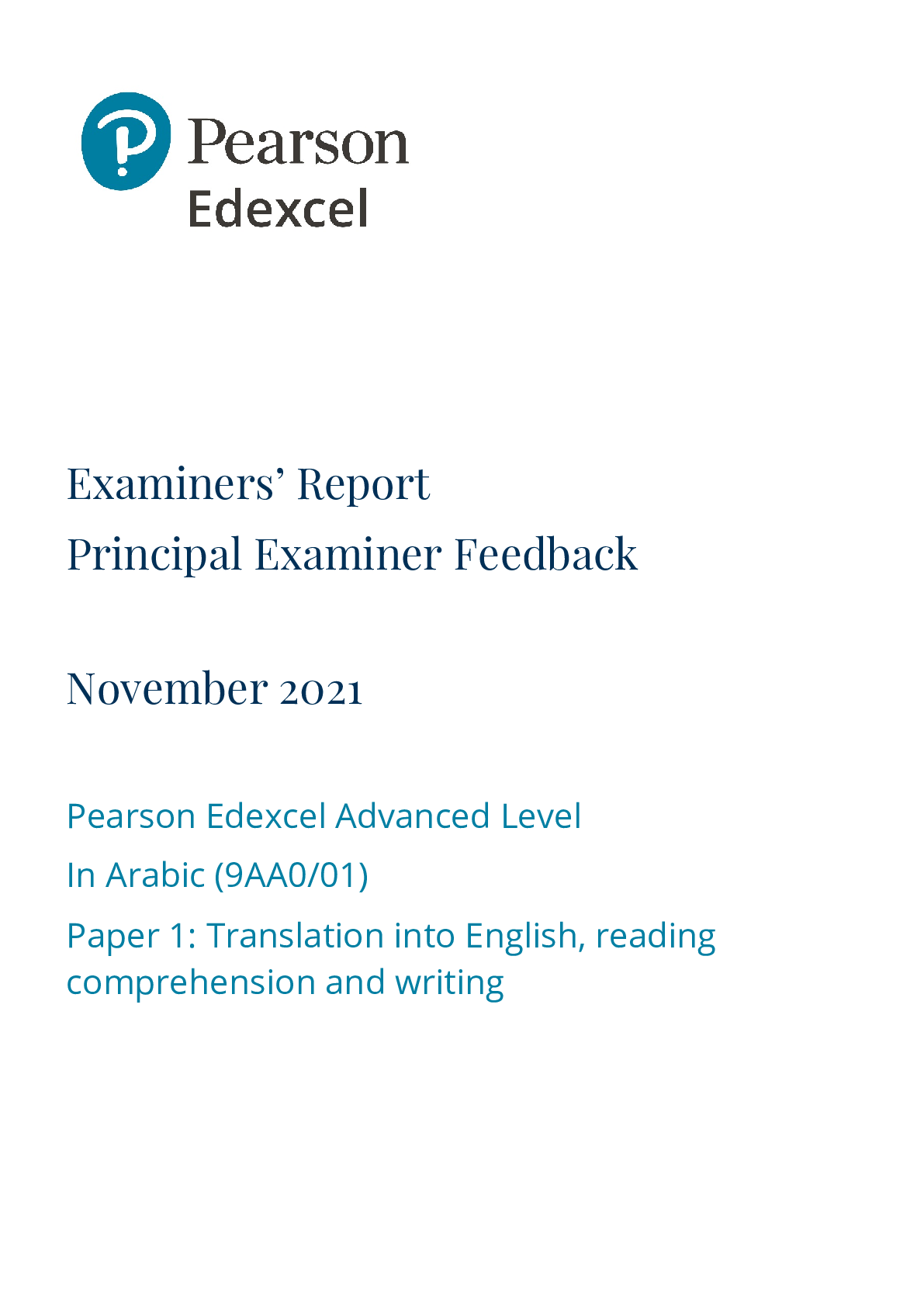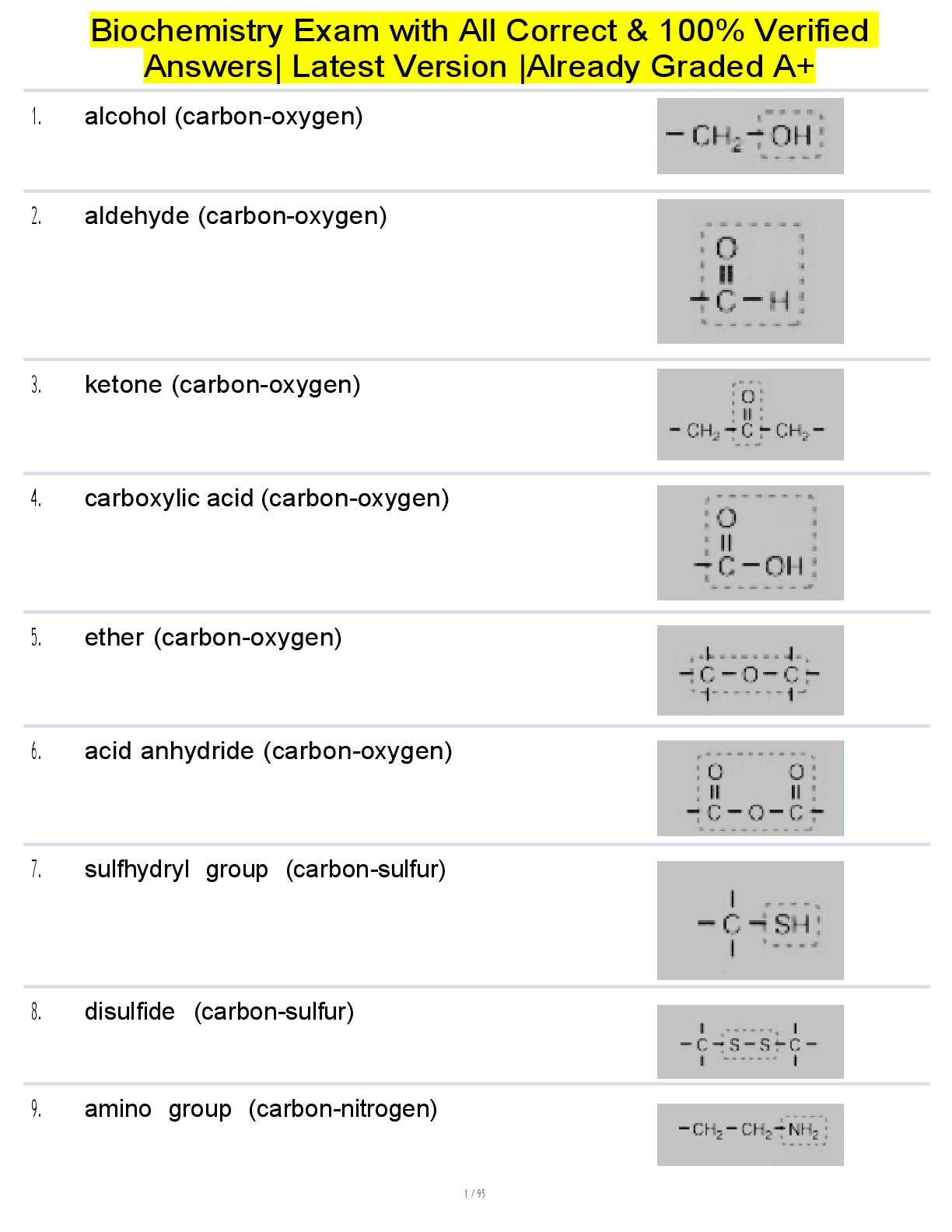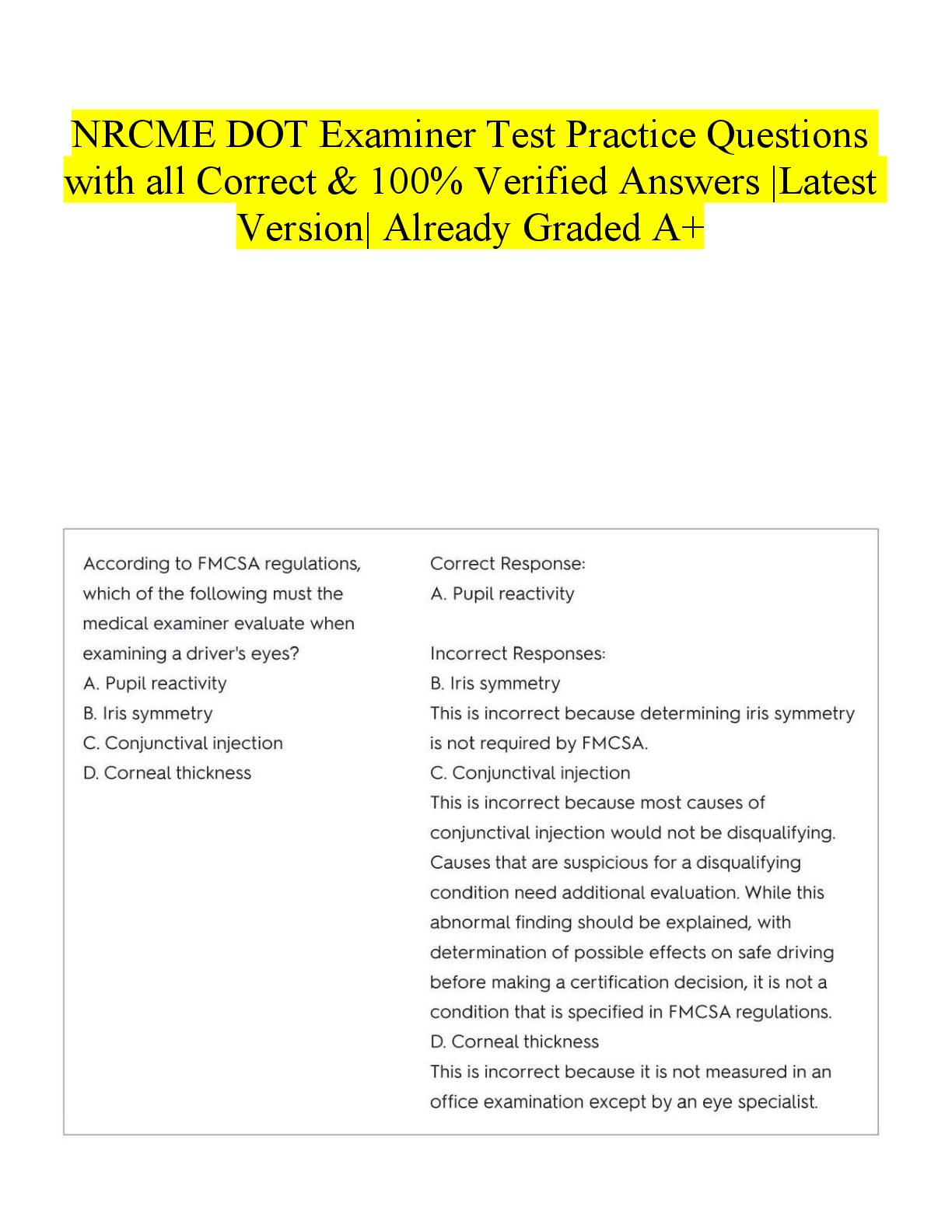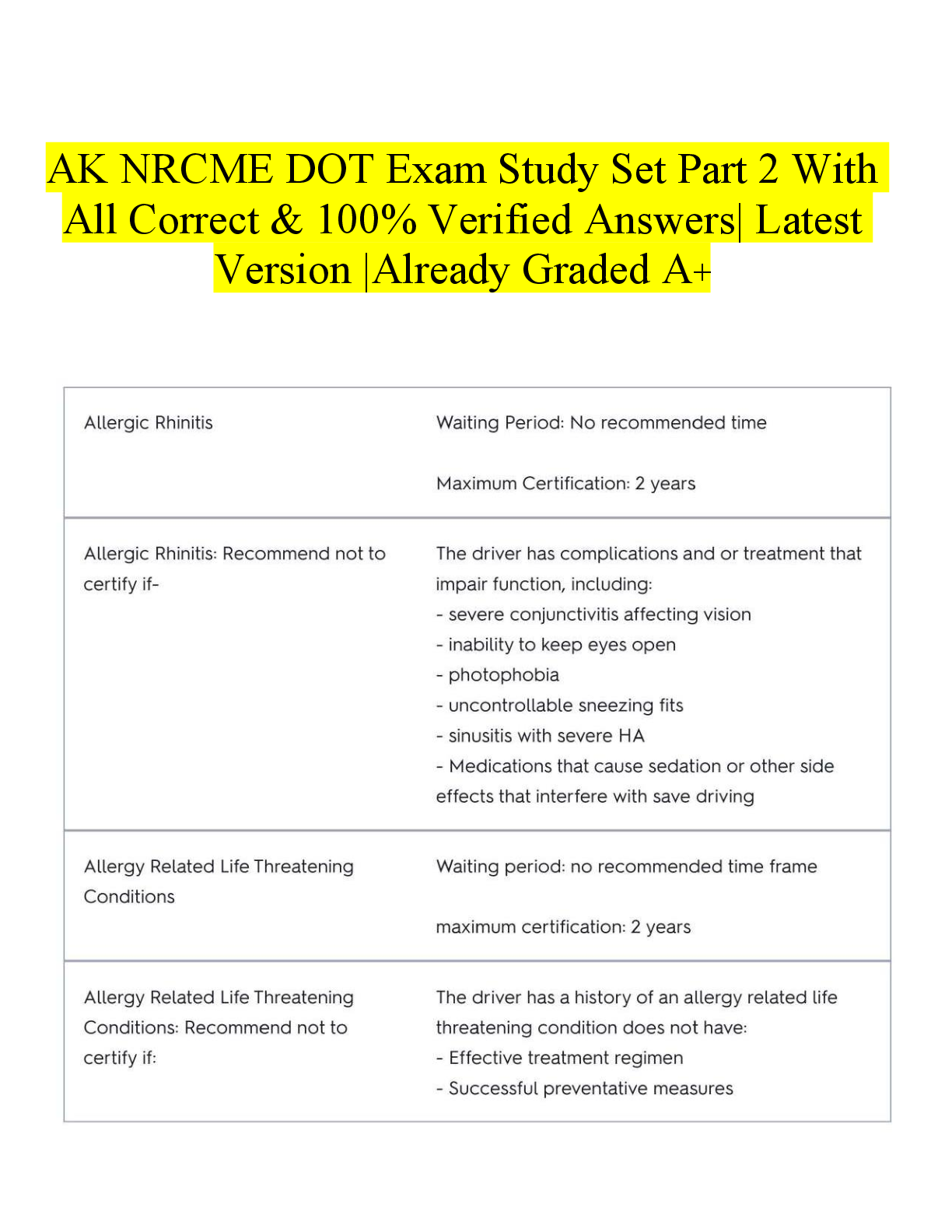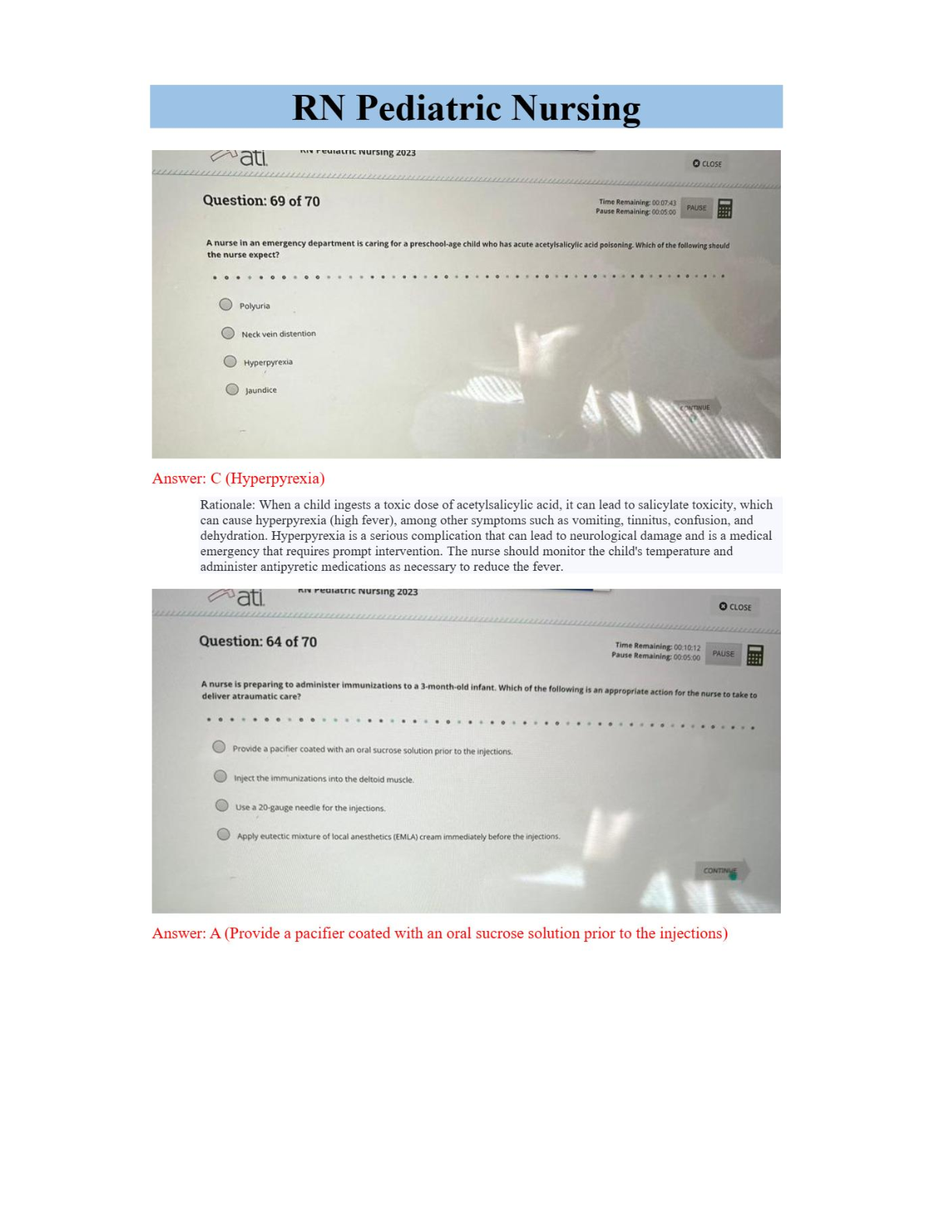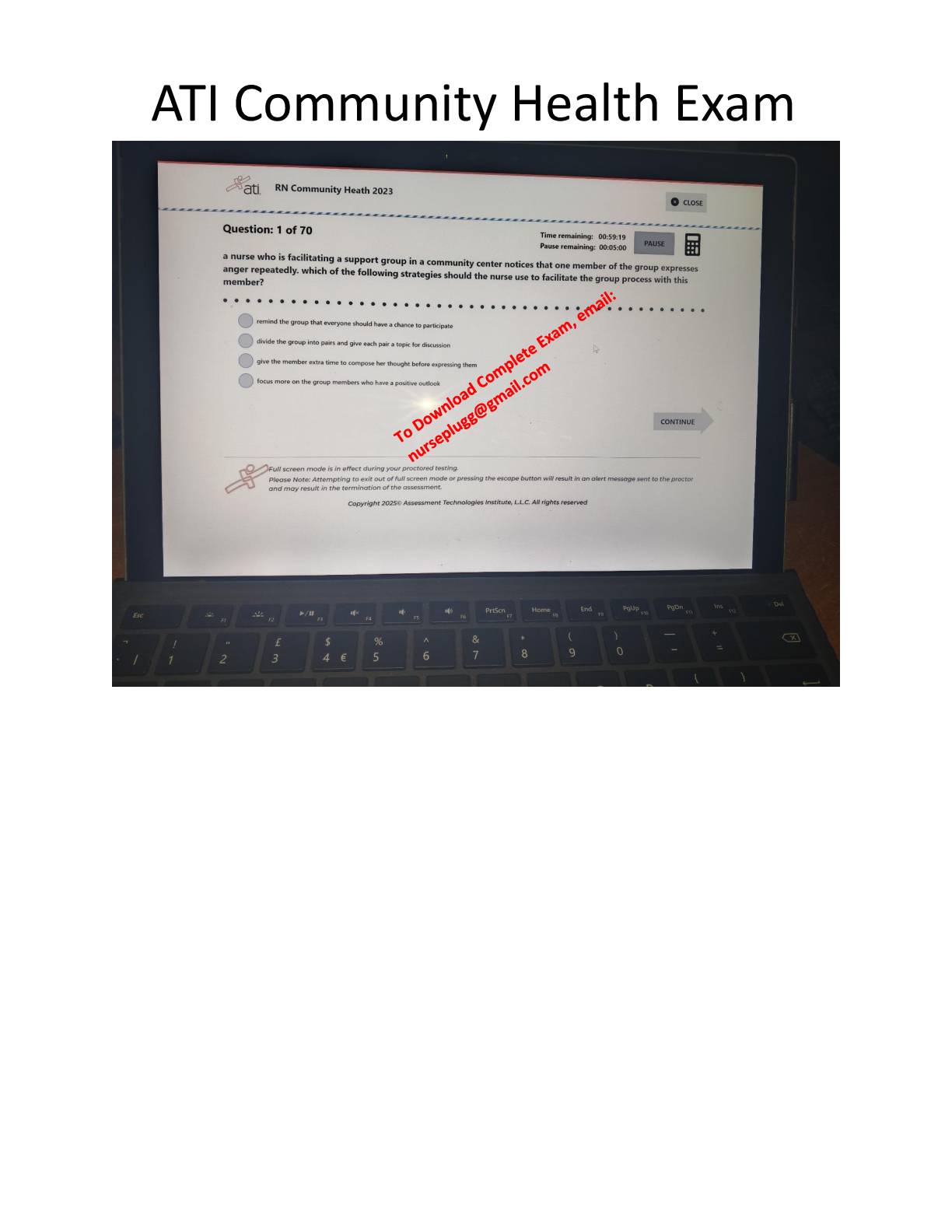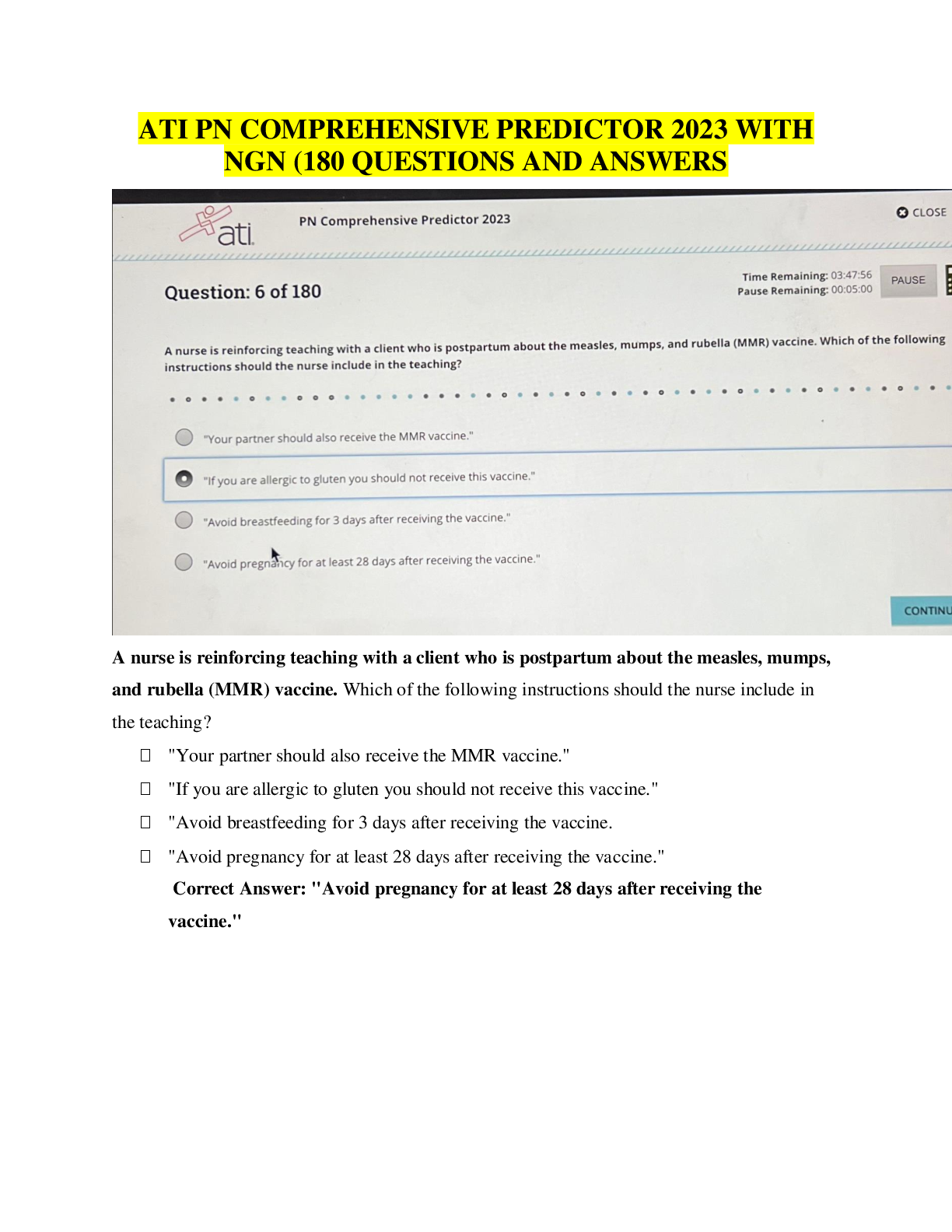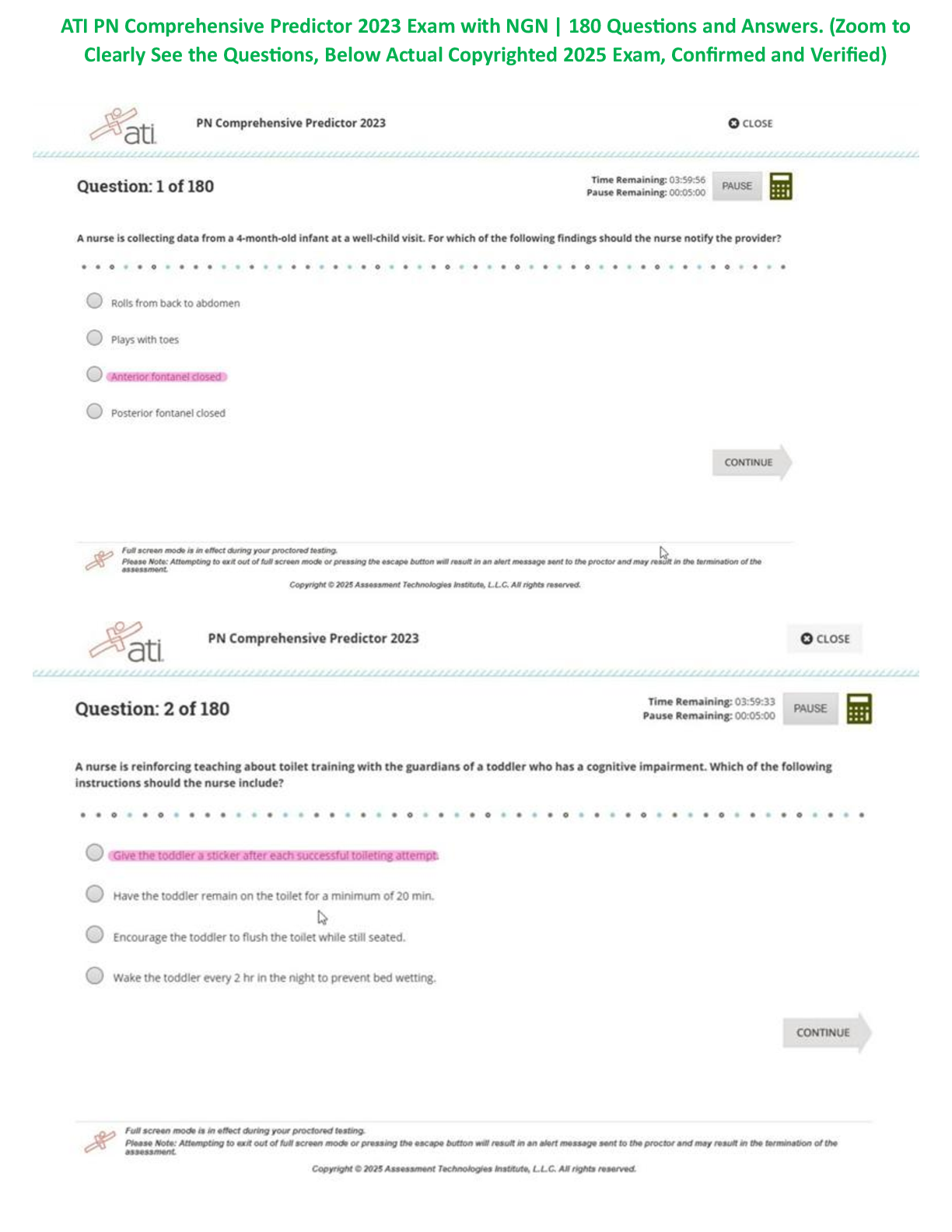NRNP 6566 Week 6 Knowledge Check (Q&A)
Document Content and Description Below
NRNP 6566 Week 6 Knowledge Check (Q&A) • Question 1 A 54 year old female has a 30 year pack smoking history. She recently underwent pulmonary function testing which showed moderate obstructi ... ve lung disease. What would your treatment plan (including medications) include for this patient? Correct Answer: The Global Initiative for Chronic Obstructive Lung Disease (GOLD) 2020 suggests that smoking cessation should be immediately pursued if the patient is still smoking. Nicotine replacement (gum, inhaler, nasal spray, patch, lozenge, or sublingual tablet) are reliable methods to assist in long term smoking cessation. Varenicline, bupropion, and nortriptyline also increase long term quit rates but should be one part of an intervention program and not the sole intervention. Professional counseling and support have a positive impact on smoking cessation. Bronchodilators are the baseline medication for COPD patients. Patients can be initiated on short acting beta agonists (SABA) or long term beta agonists (LABA) based on their symptoms. Short acting medications come in various forms including inhaler, nebulizer, pills, or liquid syrup. Long acting bronchodilators are delivered via inhaler or nebulizer. Combinations of SABA and LABA s are common in treatment plans for COPD patients. LABA have a duration of action of 12 hours while SABA last for about 4-6 hours. SABA can provide immediate symptom relief. • Question 2 A 23-year-old male with Type 1 diabetes presents to the ER complaining of fatigue and malaise. He tells you he has skipped his insulin injections the previous two days. His labs are: PH 7.10 Na 140 BUN 35 PCO2 10 K 4.1 Crt 1.1 PO2 112 Cl 105 BS 845 HCO3 4 CO2 5 + ketonemia What is this patient's acid base status? What is your working diagnosis for this patient? Correct Answer: Metabolic acidosis with respiratory alkalosis pH is low Normal HCO3 is 22-26 so 4 is low causing acidosis Leading diagnosis – Diabetic Ketoacidosis Anion gap is elevated at 31 Elevated blood sugar with positive ketones present are key symptoms of diabetic ketoacidosis • Question 3 For the following ABGs, identify the level of hypoxemia, the primary acid base disorder, and the type of compensation. Example - acute respiratory acidosis with metabolic alkalosis and severe hypoxemia ABG Result pH pCO2 pO2 HCO3 7.08 54 54 15 Correct Answer: Acute respiratory and metabolic acidosis with moderate hypoxemia Measure Normal Value Current ABG interpretation pH 7.35 – 7.45 7.08 pCO2 35 – 45 mm Hg 54 P02 80 – 100 mm Hg 54 HCO3 22 – 26 mEq/L 15 ..........Continued [Show More]
Last updated: 3 years ago
Preview 1 out of 7 pages

Buy this document to get the full access instantly
Instant Download Access after purchase
Buy NowInstant download
We Accept:

Also available in bundle (1)
Click Below to Access Bundle(s)
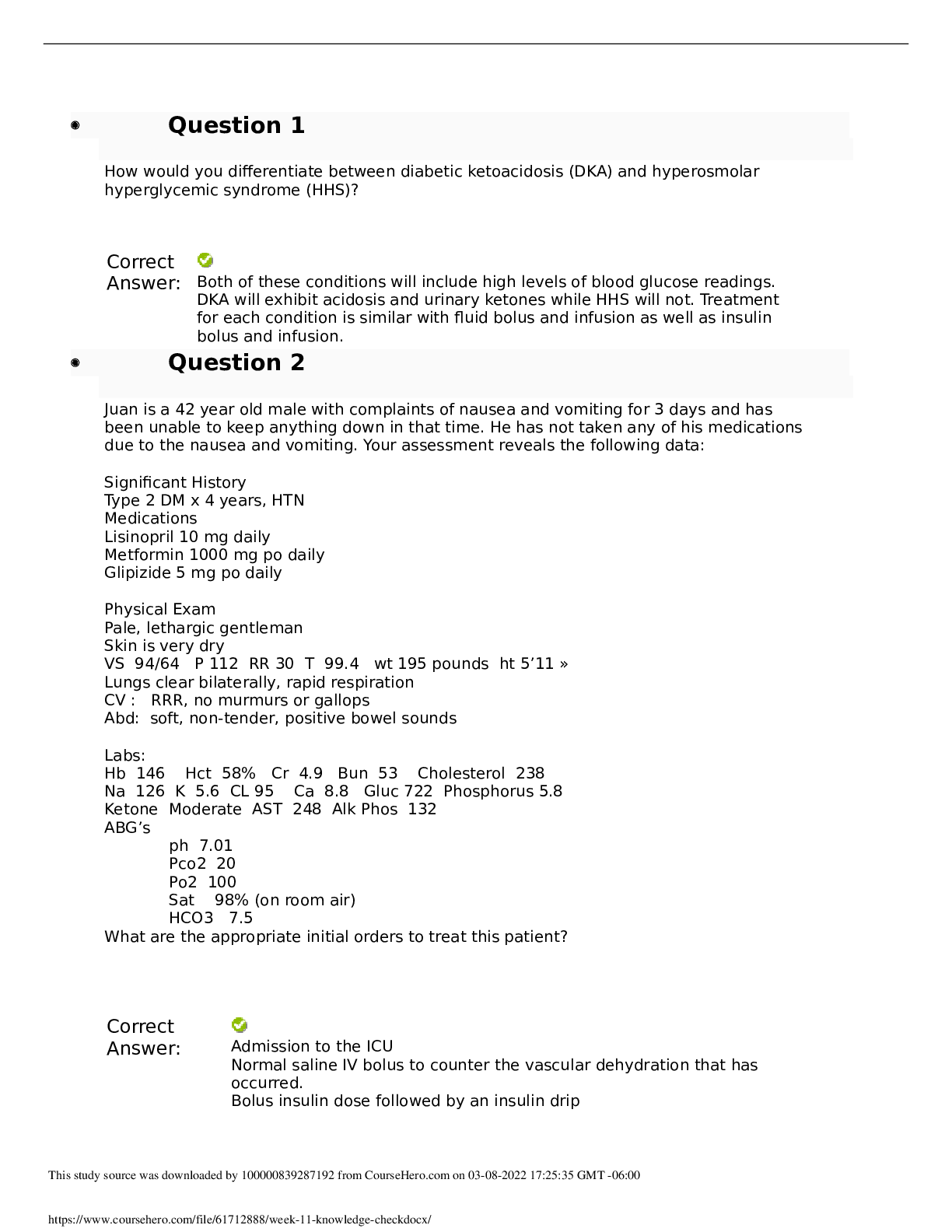
NRNP 6566 Week 3-Week 11 Knowledge Check (Q&A)
NRNP 6566 Week 3-Week 11 Knowledge Check (Q&A) NRNP 6566 Week 3-Week 11 Knowledge Check (Q&A)
By YourTutor 4 years ago
$45.5
8
Reviews( 0 )
$10.50
Can't find what you want? Try our AI powered Search
Document information
Connected school, study & course
About the document
Uploaded On
Feb 08, 2021
Number of pages
7
Written in
All
Additional information
This document has been written for:
Uploaded
Feb 08, 2021
Downloads
0
Views
130












